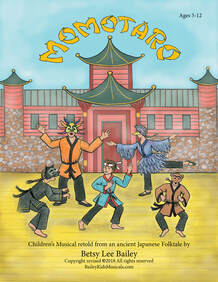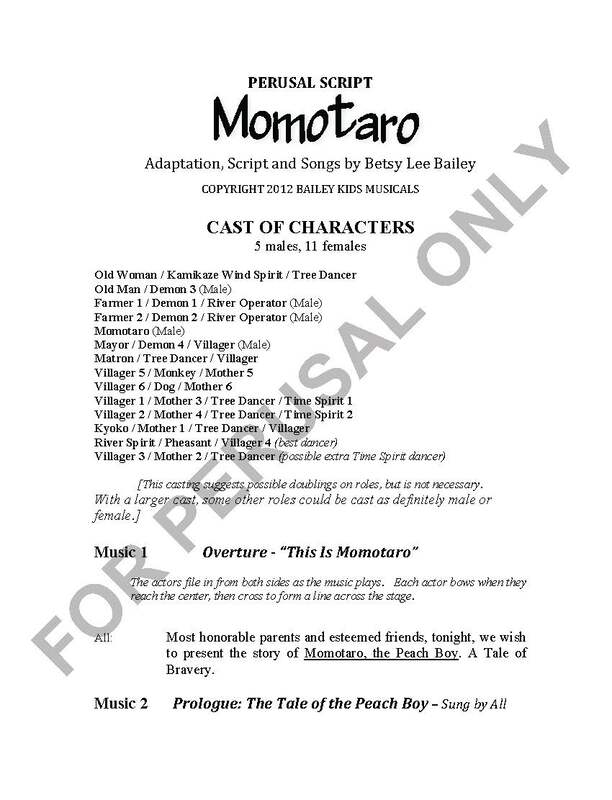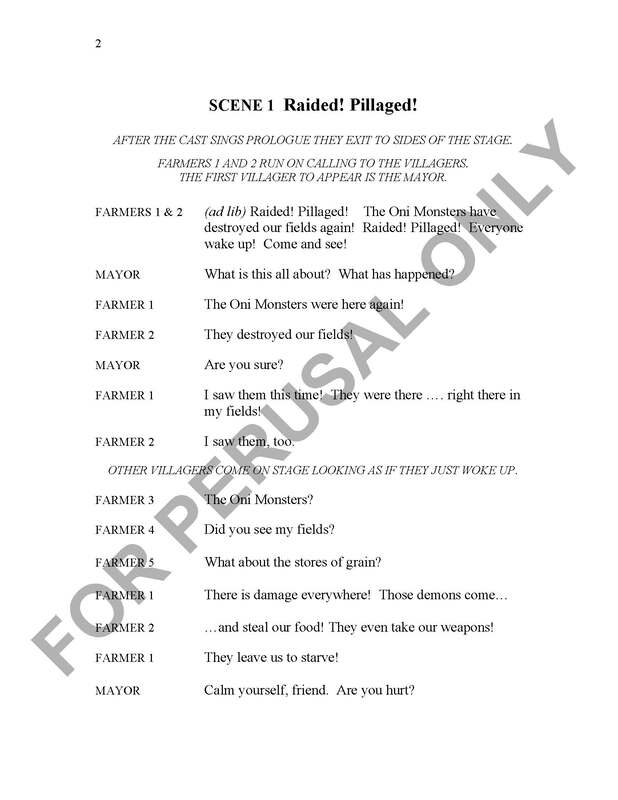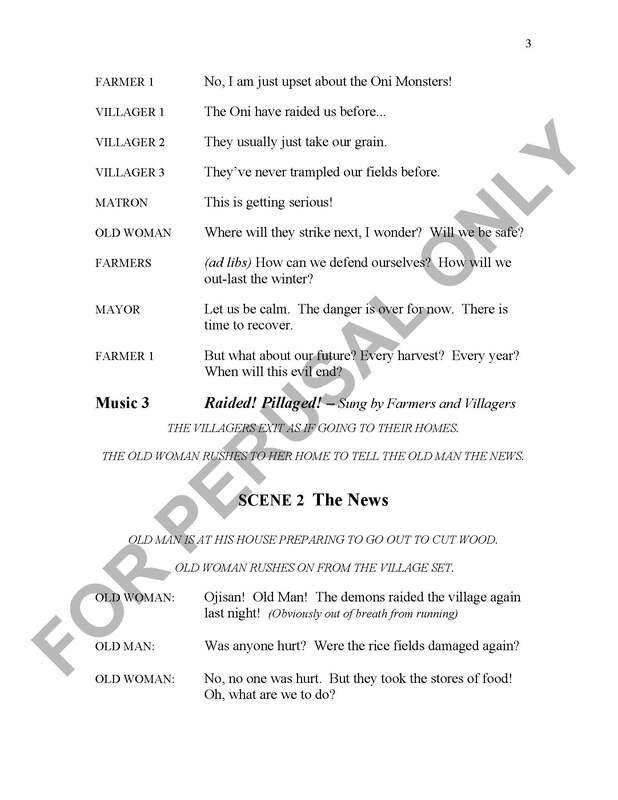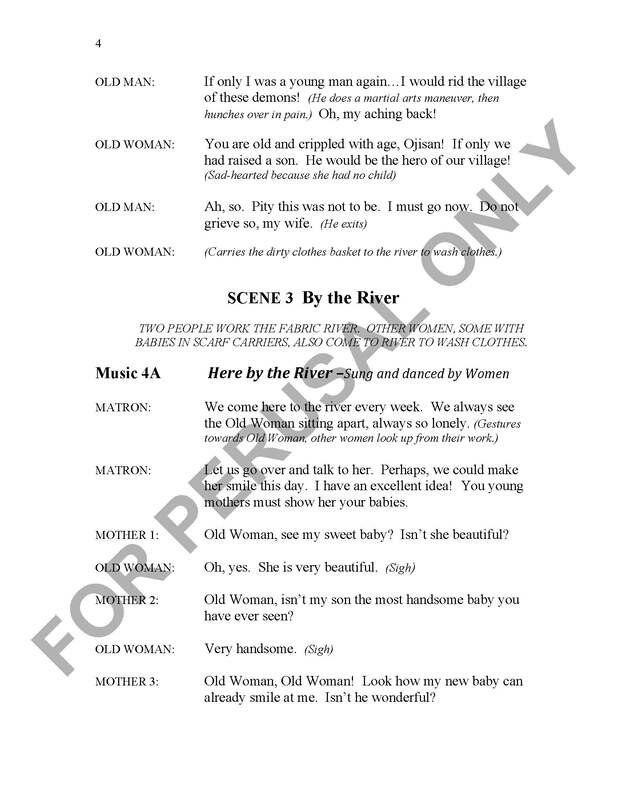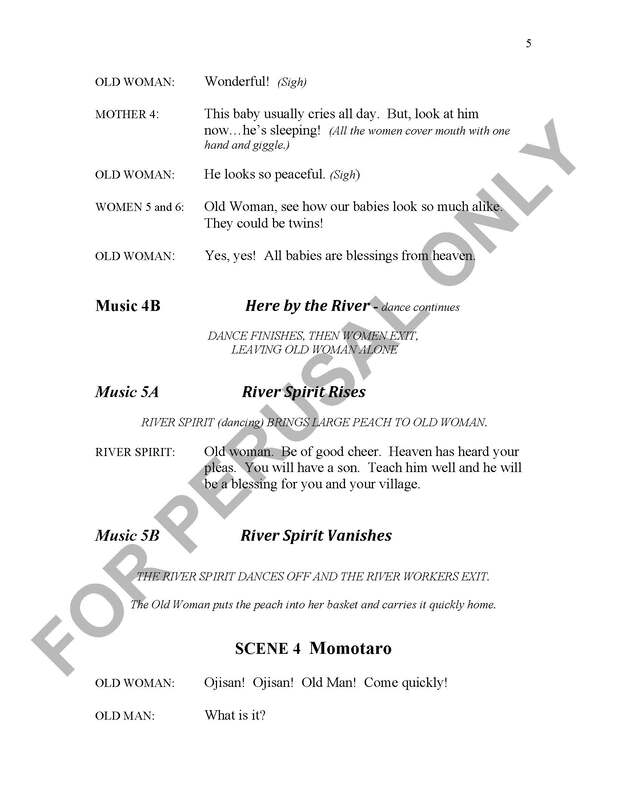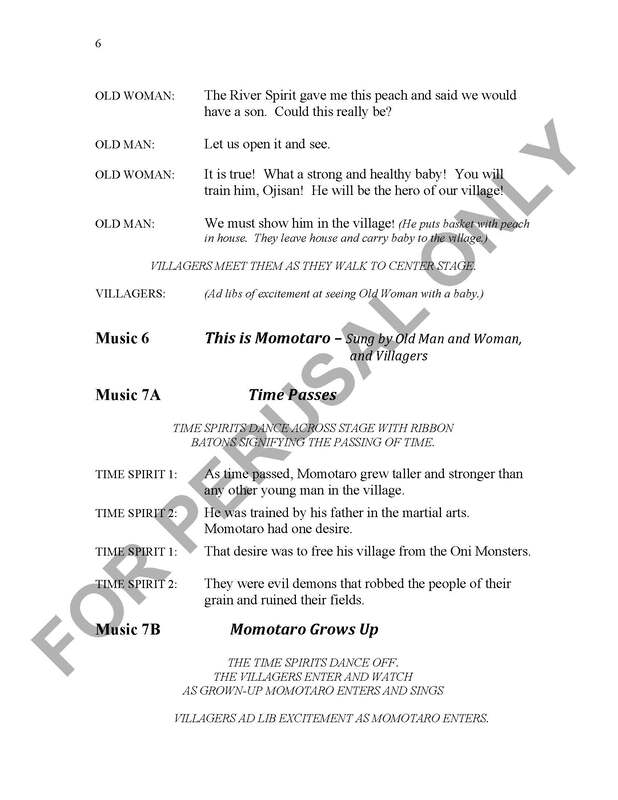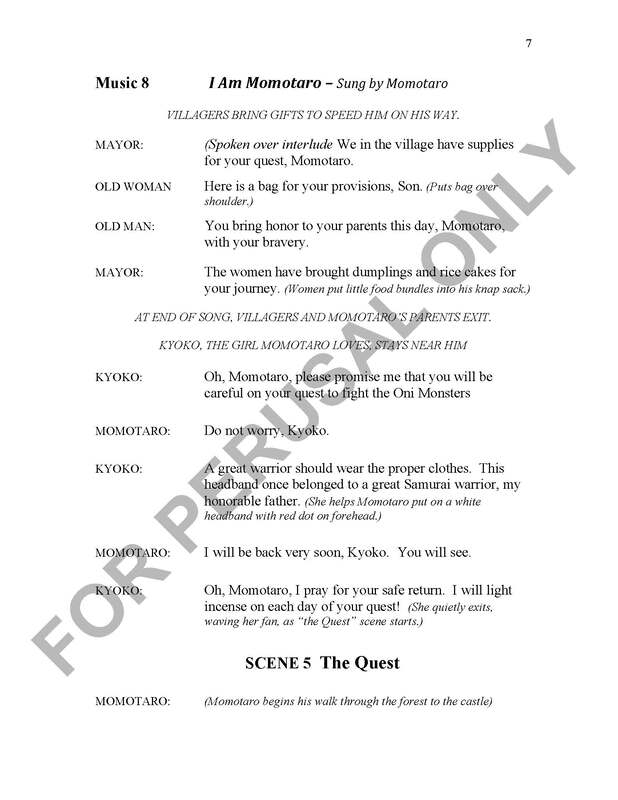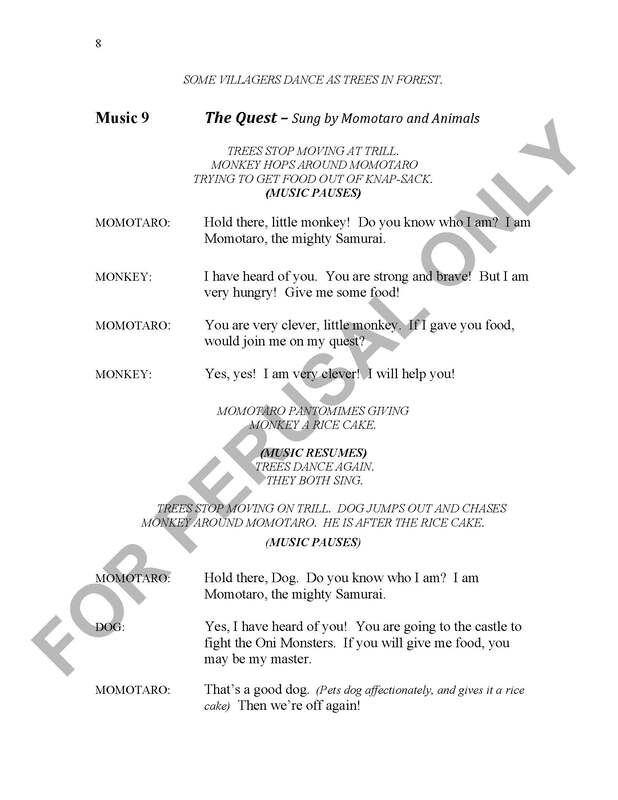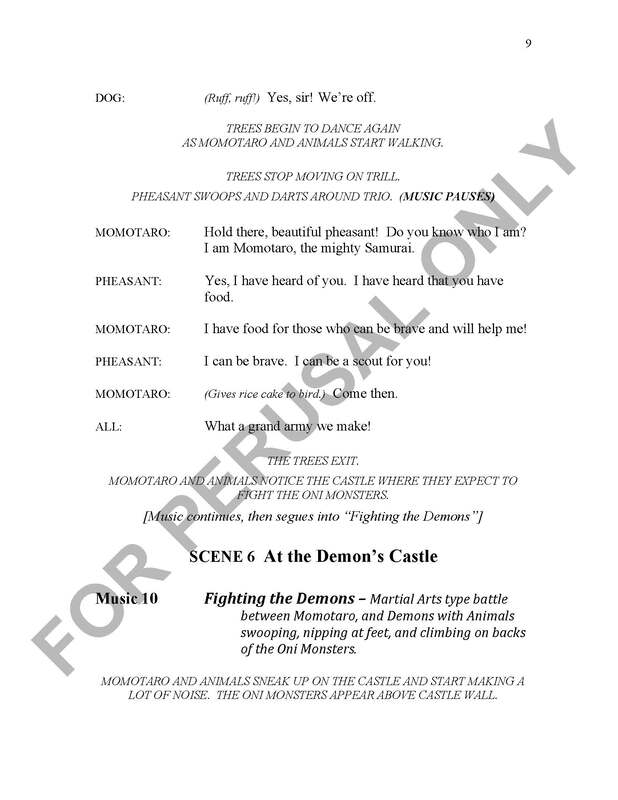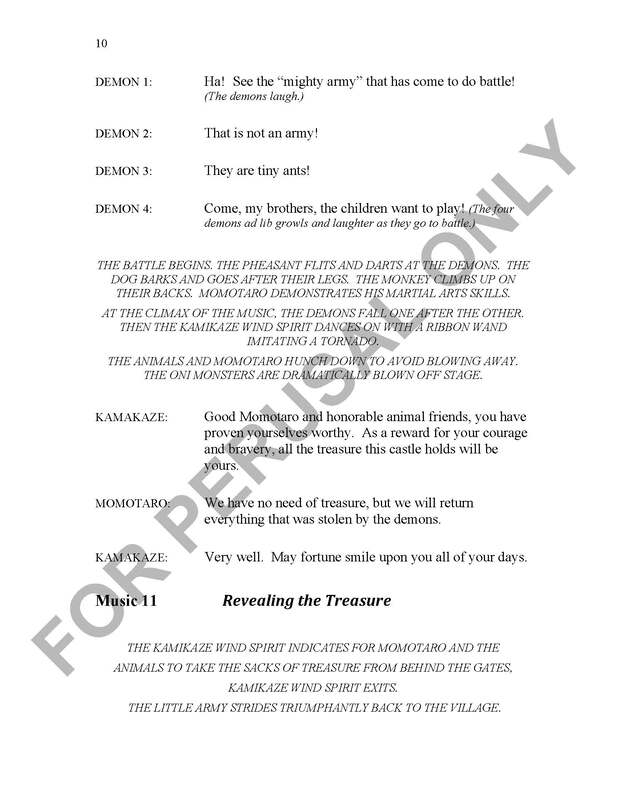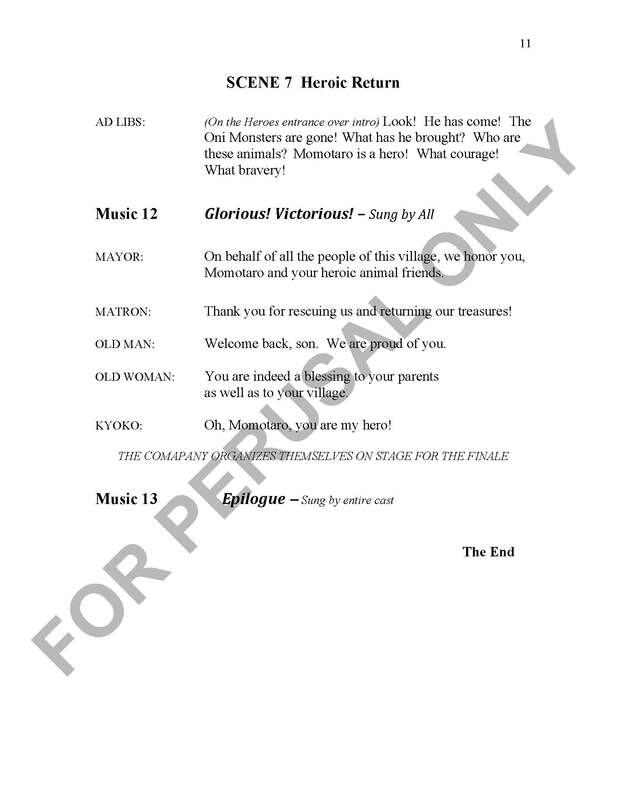Momotaro -
|
View the 2015 Summer Theater Camp Production: Momotaro, the Making of a Hero
* * * * * * * * * * * * * * * * * * * * * * * * * * * * *
* * * * * * * * * * * * * * * * * * * * * * * * * * * * *
FULL LIST OF SONG accompaniments available in Mp3 format to download individually at Sheet Music Plus:
01. Overture and 15. Bows
02. Prologue and 14. Epilogue
03. Raided! Pilliaged!
04. Here by the River
05. River Spirit Incidental
06. This Is Momotaro and 08. I am Momotaro
07. Time Spirits Incidental
09. The Quest
10.Fighting the Demons
11. Revealing the Treasure and 16. Exit Music
12. Hero
13. Glorious, Victorious
01. Overture and 15. Bows
02. Prologue and 14. Epilogue
03. Raided! Pilliaged!
04. Here by the River
05. River Spirit Incidental
06. This Is Momotaro and 08. I am Momotaro
07. Time Spirits Incidental
09. The Quest
10.Fighting the Demons
11. Revealing the Treasure and 16. Exit Music
12. Hero
13. Glorious, Victorious
* * * * * * * * * * * * * * * * * * * * * * * * * * * * *
Read the streamlined Perusal Script
Read the streamlined Perusal Script
Listen to the Guide Vocals of 9 original songs
Prologue Vocals
Raided! Pillaged! Vocals
Here by the River Vocals
This Is Momotaro Vocals
I am Momotaro Vocals
The Quest Vocals
Hero Vocals
Glorious! Victorious! Vocals
Epilogue Vocals
Raided! Pillaged! Vocals
Here by the River Vocals
This Is Momotaro Vocals
I am Momotaro Vocals
The Quest Vocals
Hero Vocals
Glorious! Victorious! Vocals
Epilogue Vocals
* * * * * * * * * * * * * * * * * * * * * * * * * * * * *
Synopsis: In ancient Japan, a group of Oni Monsters has taken up residence in a castle. They raid the villagers and ruin the fields in the countryside. An old couple prays for a son whom they might raise to be a hero to their village. The River Spirit brings a baby to the Old Woman concealed inside a peach. The Old Man trains him in martial arts. When the boy is old enough, he is sent on a quest to conquer the Oni Monsters. On the way he recruits some animal compatriots. They fight the demons and return home victorious.
Setting: Village street scene to the left, hilltop castle façade up center surrounded by trees of the forest (optional), and small house down right.
Properties: 2 Chinese ribbon wands (for Time Dancers and Kamikaze Wind Spirit), Plastic rustic ax, knife and tote satchel (for Old Man), 7 laundry baskets for the mothers, bundles of clothes or scarves (laundry), 6-7 small baby dolls wrapped in scarf slings (for young Mothers), 2 short wooden stools (to be placed in front of houses), Large peach with slit in side to hold a baby doll, Swaddling blanket, Knapsack or satchel (for Momotaro), Rice cakes or fake dumplings wrapped in cloth bundles, Large cloth bags stuffed to look like sacks of treasure, Six yards of light weight blue fabric (river) and two dowels, “Tree wands” (made of cardboard and paint, or stems purchased at craft store), Eye mask forms and feathers and tissue paper in various colors (to create masks of characters in Quest scene).
Costumes: All characters wear “basics” consisting of black leggings or loose long black pants and plain black T-shirts, flat black shoes (or bare feet), with the girl’s hair braided tightly back or in a bun. Villagers wear kimono robes with ties. Women may wear long skirts. Fantasy characters wear kimono robes and feather masks. These should suggest the look of the character, but need not be very realistic (see front cover). The actors working the river and dancing as trees are considered invisible in Kabuki Theater when wearing black.
Setting: Village street scene to the left, hilltop castle façade up center surrounded by trees of the forest (optional), and small house down right.
Properties: 2 Chinese ribbon wands (for Time Dancers and Kamikaze Wind Spirit), Plastic rustic ax, knife and tote satchel (for Old Man), 7 laundry baskets for the mothers, bundles of clothes or scarves (laundry), 6-7 small baby dolls wrapped in scarf slings (for young Mothers), 2 short wooden stools (to be placed in front of houses), Large peach with slit in side to hold a baby doll, Swaddling blanket, Knapsack or satchel (for Momotaro), Rice cakes or fake dumplings wrapped in cloth bundles, Large cloth bags stuffed to look like sacks of treasure, Six yards of light weight blue fabric (river) and two dowels, “Tree wands” (made of cardboard and paint, or stems purchased at craft store), Eye mask forms and feathers and tissue paper in various colors (to create masks of characters in Quest scene).
Costumes: All characters wear “basics” consisting of black leggings or loose long black pants and plain black T-shirts, flat black shoes (or bare feet), with the girl’s hair braided tightly back or in a bun. Villagers wear kimono robes with ties. Women may wear long skirts. Fantasy characters wear kimono robes and feather masks. These should suggest the look of the character, but need not be very realistic (see front cover). The actors working the river and dancing as trees are considered invisible in Kabuki Theater when wearing black.
